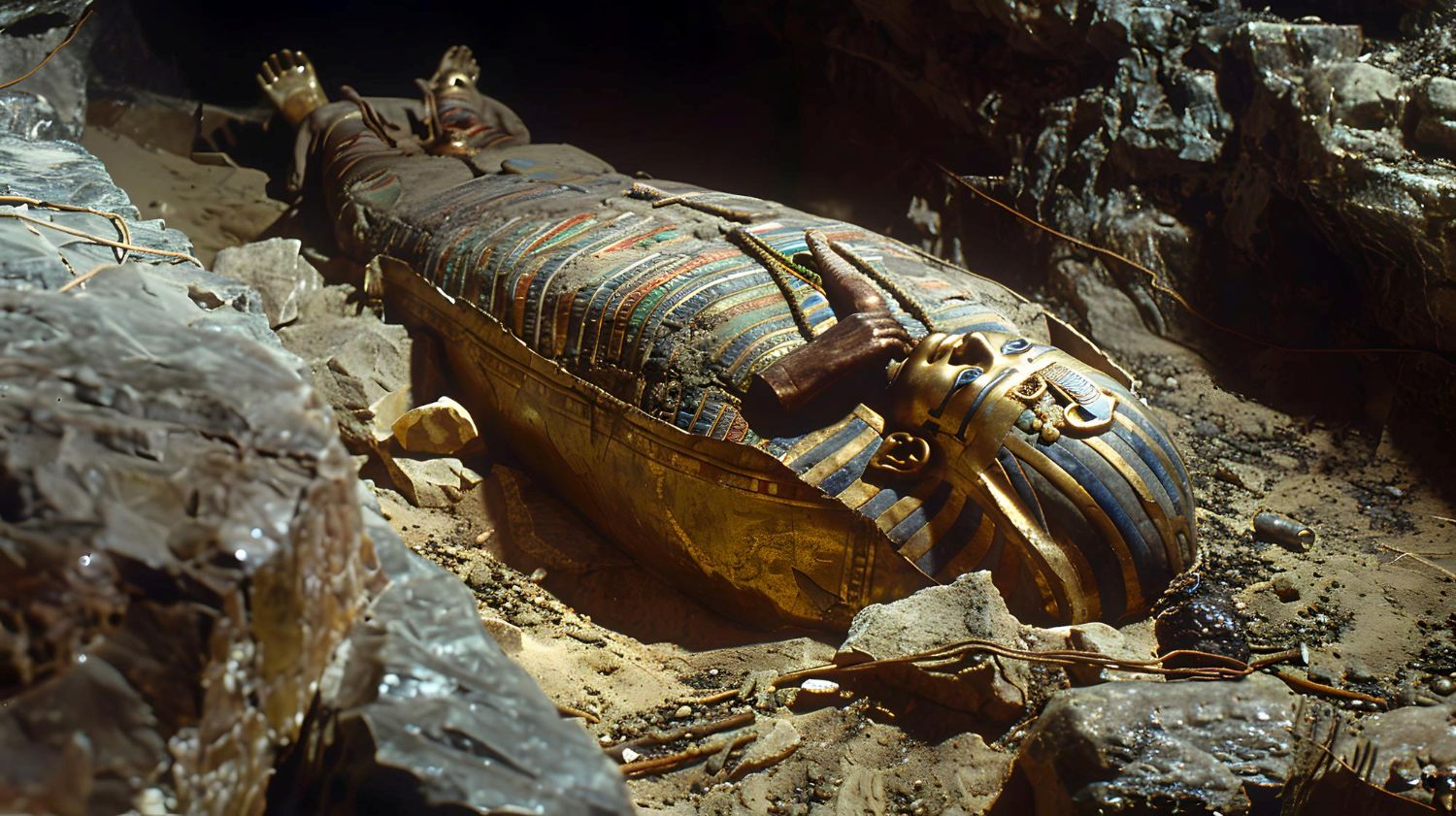Sensory heritage is the study of how we connect with historical objects using senses beyond just sight, like smell or touch.
Ancient Egyptians used special oils, waxes, and balms to preserve bodies for the afterlife through a process called mummification. Until now, most studies of mummies have focused on collections in European museums.
But a new study, led by researchers from the University of Ljubljana, the University of Krakow, and the Egyptian Museum in Cairo, explored mummies in Cairo’s collection.
The goal: To determine what mummified bodies smell like.
Scientists digitally unwrapped the almost 2,300-year-old undisturbed mummy of a teenage boy
Researchers wanted to know if today’s mummies still carry traces of the original embalming materials. And if so, could those scents help museums better preserve and explain these ancient remains?
To find out, they studied nine mummies at the Egyptian Museum in Cairo. Some were on display while others were tucked away in storage. These mummies came from different periods (the oldest is 3,500 years old) and had been preserved and stored in various ways.
Because the mummies are so fragile, the team followed strict non-destructive methods to protect them while gathering scent data.
To explore the scents of ancient mummies, researchers used a mix of sensory testing, chemical analysis (GC-MS-O), microbiology, and historical research. But first, they had to make sure it was safe.
Sound of a mummy heard again for the first time in 3,000 years
Many mummies had been treated with synthetic pesticides decades ago, which can be harmful. So, any bodies with high levels of these chemicals were excluded from the study.
For the remaining nine mummies, the team gently opened their sarcophagi just enough to insert tiny pipes and collect air samples. These samples were sealed in special bags and taken to a separate room, where researchers could smell them directly, a rare, nose-to-nose encounter with the past.
To dig deeper into what ancient mummies smell like, researchers captured more air samples using metal tubes filled with a special material that traps scent molecules.
These samples were taken to a lab, where scientists used chromatography to separate the smells into individual components, so trained sniffers could describe each one in detail.
Despite differences in how strong the smells were, most mummies shared a familiar scent palette: woody, floral, sweet, spicy, stale, and resin-like.
Scientists revealed the faces of 3 Egyptian mummies
Chemical tests also revealed traces of ancient embalming ingredients like conifer oils, frankincense, myrrh, and cinnamon. All of these were used by the museum recently for preservation.
They also detected degraded animal fats used in the mummification process, the scent of the human remains themselves, and both modern synthetic pesticides and natural plant-based oils used by the museum for preservation.
Mummies on display gave off stronger scents than those kept in storage. Although none were overpowering like modern perfumes. One mummy even surprised researchers with a smell that reminded them of black tea. The likely culprit? A natural compound called caryophyllene, also found in cloves and cinnamon.
Now, the team is taking things a step further. They plan to recreate these ancient aromas so that visitors to the Egyptian Museum in Cairo can experience the scent of history, literally.
Authors noted, “The results also revealed close similarities between mummified bodies from the Late Period, indicating that with a larger set with more detailed information on the mummified bodies, it may be possible to differentiate by the period (or at least by the mummification practice) based on chemical and olfactory profiles and to achieve a better understanding of the different practices.”
Journal Reference
- Emma Paolin, Cecilia Bembibre, Fabiana Di Gianvincenzo, Julio Cesar Torres-Elguera, Randa Deraz, Ida Kraševec, Ahmed Abdellah, Asmaa Ahmed, Irena Kralj Cigić, Abdelrazek Elnaggar, Ali Abdelhalim, Tomasz Sawoszczuk, and Matija Strlič. Ancient Egyptian Mummified Bodies: Cross-Disciplinary Analysis of Their Smell. Journal of the American Chemical Society. DOI: 10.1021/jacs.4c15769
